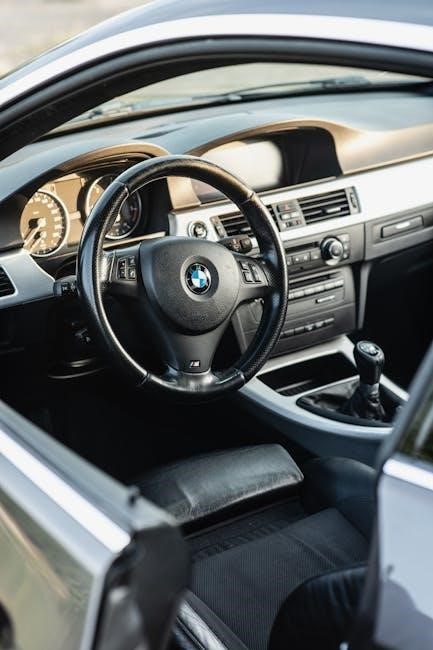The debate continues: are manual transmissions riskier than automatics? Car enthusiasts often champion the engagement of a stick shift, while others prefer the ease of an automatic. But does transmission type impact accident likelihood? Let’s delve into accident rates.

General Accident Rate Comparison
Studies offer mixed results. Some suggest manual cars have higher accident rates, potentially due to driver inexperience or risk-taking. Conversely, some show no significant difference, attributing accidents more to driver behavior than transmission type.
Studies Showing Higher Accident Rates for Manual Transmissions
Certain studies indicate a correlation between manual transmissions and elevated accident rates. This is frequently attributed to the increased cognitive load required to operate a manual vehicle. Drivers must coordinate gear shifting, clutch control, and steering, potentially leading to distractions. Novice drivers, in particular, may find this multitasking challenging, increasing their risk of accidents. Furthermore, the perception of greater control with manual transmissions can sometimes encourage riskier driving behaviors. Some research suggests teenagers driving manual cars are more likely to engage in unsafe practices, contributing to a higher accident frequency compared to automatic vehicles.
Studies Showing No Significant Difference or Higher Rates for Automatic Transmissions
Counter to the previous point, some studies suggest no definitive safety advantage for either transmission type. Several analyses propose accident rates are more closely linked to driver behavior, experience, and road conditions than the transmission itself. Some research even indicates potentially higher accident rates for automatic vehicles, possibly due to driver complacency or over-reliance on the vehicle’s automated systems. Mild and moderate accidents may be more frequent in automatic cars due to distracted driving. Ultimately, the consensus is that driver skill and responsible behavior are more critical factors in accident prevention than transmission type.

Factors Influencing Accident Rates Beyond Transmission Type
While transmission type is debated, other factors significantly impact accident rates. Driver experience, road conditions, and risky behavior often play a larger role in determining vehicle safety, regardless of whether the car is manual or automatic.
Driver Experience and Skill
Driver experience and skill are paramount in accident avoidance, often overshadowing transmission type. A seasoned driver, regardless of whether they prefer manual or automatic, can navigate challenging situations more effectively due to accumulated knowledge and reflexes. Novice drivers, however, may find the complexities of a manual transmission particularly demanding, increasing their risk. Mastering clutch control, gear shifting, and coordinating these actions with other driving tasks requires practice and focus. An inexperienced driver in a manual car may struggle to react quickly in emergencies, potentially leading to accidents. Thus, proficiency behind the wheel is crucial for safety.
Road Conditions and Environment
Road conditions and environmental factors significantly influence accident rates, often independent of transmission type. Inclement weather, such as rain, snow, or ice, reduces traction and visibility, demanding increased driver awareness and control. Navigating these conditions in a manual transmission vehicle may require more precise throttle and clutch control to prevent wheel slippage or stalling, potentially increasing the workload for the driver. Similarly, challenging road surfaces, like gravel or potholes, demand careful handling. In such scenarios, the driver’s ability to adapt and maintain control, regardless of transmission, is crucial. Therefore, the environment plays a vital role in overall safety.
Driver Behavior and Risk-Taking
Driver behavior significantly impacts accident rates, often outweighing the influence of transmission type. Aggressive driving, speeding, distracted driving (texting, phone calls), and impaired driving (alcohol, drugs) drastically increase the risk of accidents, irrespective of whether the vehicle has a manual or automatic transmission. Risky maneuvers, such as tailgating or reckless lane changes, further compound the danger. Drivers with a propensity for risk-taking are more likely to be involved in accidents, regardless of their chosen transmission. Safe driving practices, including adhering to speed limits, maintaining a safe following distance, and avoiding distractions, are paramount in preventing accidents. Ultimately, responsible driving habits are the key to road safety.

Specific Scenarios and Transmission Type
Certain driving conditions may favor one transmission type over another. Hilly terrains pose challenges for manual cars, while first-year drivers might find automatics simpler. Let’s explore scenarios and transmission type.
Driving in Hilly Areas
Manual transmissions require more driver engagement, especially in hilly areas. Drivers need to coordinate clutch, gear changes, and throttle to prevent stalling or rollback. This increased workload can be particularly demanding on steep inclines or during stop-and-go traffic. The need for constant gear changes and clutch control can divert attention from the road, potentially increasing accident risk. Automatic transmissions, on the other hand, offer a smoother and less demanding experience in hilly conditions, allowing drivers to focus more on steering and braking, which can improve overall safety and reduce the likelihood of accidents.
First-Year Drivers and Transmission Choice
For novice drivers, transmission choice can significantly impact accident risk. Manual transmissions demand more coordination, potentially overwhelming new drivers. The added complexity of clutch control and gear shifting might distract them, increasing the likelihood of errors. Automatic transmissions offer a simpler driving experience, allowing beginners to focus on steering, braking, and road awareness. This reduced cognitive load can contribute to safer driving habits. Some research suggests that first-year drivers who test in automatic cars and then drive manuals may face higher accident risks. However, focusing on driver education and training remains crucial, regardless of transmission type, for improving overall safety among new drivers.

Injury Severity and Transmission Type
Studies suggest a correlation between manual transmissions and a higher risk of incapacitating or fatal injuries compared to automatic ones. This could be due to various factors beyond transmission type alone.
Studies on Incapacitating and Fatal Injuries
Research indicates a potential link between manual transmissions and increased severity of injuries in accidents. Specifically, some studies suggest that drivers in manual transmission vehicles face a higher risk of incapacitating and fatal injuries when compared to those driving automatic vehicles; Factors contributing to fatal injuries in automatic transmission crashes include older vehicles, public transport use, and morning accidents.
This correlation doesn’t definitively prove causation, as other variables such as driver behavior, vehicle type, and road conditions also play significant roles. The increased risk associated with manual transmissions may stem from the greater attentional demands required to operate them, especially in critical situations. Further research is needed.
Insurance Implications
Insurance premiums might differ based on transmission type. Manual vehicles might face higher premiums due to perceived driver skill, while automatics, with complex repairs, could also see increased costs.
Potential Premium Differences Based on Transmission Type
Insurance companies assess risk factors, and transmission type might subtly influence premiums. Historically, manual cars, associated with spirited driving, could face slightly higher rates, especially for younger drivers. Insurers might perceive manual drivers as potentially riskier, leading to increased costs. Conversely, automatics, seen as easier to operate, might have been cheaper to insure.
However, this is not definitive. The complexity of automatic transmissions, leading to potentially higher repair costs, could offset any initial savings. Driver history, location, and vehicle safety features play a more significant role in determining premiums than transmission alone. It’s wise to compare quotes.
The question of whether manual or automatic transmissions are inherently safer remains complex. While some studies suggest a slightly higher accident rate for manuals, particularly involving incapacitating injuries, other research finds no significant difference. Ultimately, driver behavior, road conditions, and vehicle maintenance are paramount. Factors like driver skill and experience overshadow transmission type.
Modern automatic transmissions offer enhanced safety features, while skilled manual drivers can maintain control in various scenarios. The “safer” transmission depends heavily on the individual behind the wheel. Therefore, no definitive answer exists. Responsible driving habits are the key to minimizing accident risk, regardless of transmission type.
